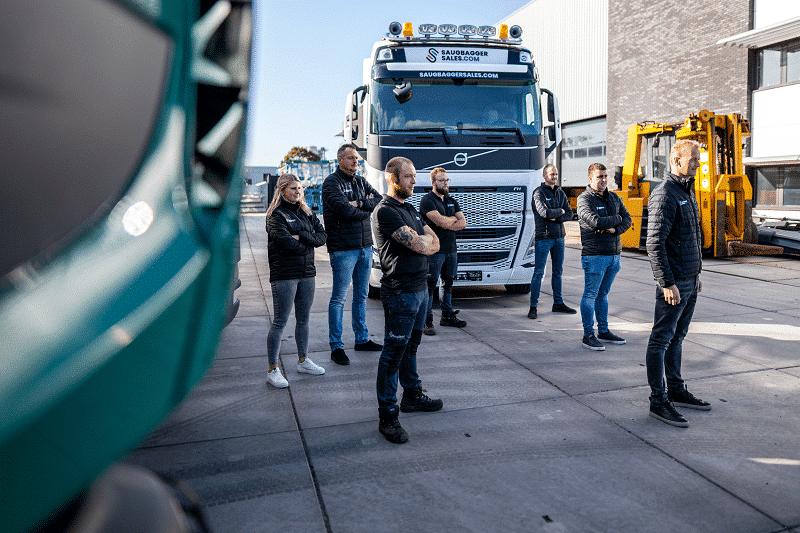Vacuum excavator
Digging with an excavator can be difficult and time consuming, but using a vacuum excavator or suction excavator can be a perfect solution. By applying suction technology, it is possible to dig in awkward places and expose cables and pipes without damage. But what exactly is a vacuum excavator and how does it work?
What is a vacuum excavator and what are the different types?
Different vacuum excavators have various types of suction technologies. For instance, there are soil suction excavators with fans (turbines) and vacuum excavators equipped with a vacuum system, consisting of a pump and a cylindrical tank. Both systems make it possible to vacuum up liquids, sludge, mud, debris and other materials. Vacuum excavators can be used for vacuuming cables and pipes, uncovering tree roots and cleaning sludge tanks. Some vacuum excavators can only suction liquids and others can suction dry and wet substances, as well as blow them out.
Operation of a vacuum excavators
In a vacuum excavator, the pump creates the vacuum in the tank and causes the material to be drawn into it. The pressure difference in the tank and the outside environment then pushes the material to the bottom of the tank. A round tank is needed to create the vacuum.
The vacuum excavator is able to generate large suction with relatively little energy, and is therefore more energy-efficient than using a suction excavator with turbines.
But what are other differences and similarities between vacuum excavators and suction excavators?
Nature of work – Vacuum excavators vs suction excavators
Both machines are flexible in their use and are able to handle various suction tasks. For example, both machines can vacuum dry substances such as sand, gravel, mud and rubble. Similarly, both excavators can vacuum liquids, such as polluted water and sludge.
Each excavator is more suited to certain situations. For example, when vacuuming cables, pipes and tree roots, damage control is important, and the suction hose should be kept well clear of the cables and tree roots. In this instance, the suction power of the vacuum excavator is more suitable for vacuuming solid soil from crawl spaces.The vacuum method works less well because of the distance to the material to be vacuumed.
Because the vacuum technique uses pipes with a small diameter, it is also less suitable for vacuuming larger pieces of debris. For hard-to-reach places, such as crawl spaces, these hoses are easier to use than the suction hoses of the vacuum excavator with fans.
Suction and blowing
A vacuum excavator equipped with turbines only has the ability to vacuum materials and liquids.The vacuum excavator, on the other hand, also has the possibility of blowing back materials as the air flow is reversible.
Emptying the tank or container
Emptying the container in a vacuum excavator differs from a turbine vacuum excavator. The vacuum excavator is emptied by tilting the tank backwards, and the liquids and dry materials end up at the back of the car. The vacuum car empties sideways and it’s possible to easily tip the contents into a separate container.
Consumption
Vacuum technology requires less energy than suction technology with fans. In operations where more suction is required, the fuel consumption of a vacuum excavator will be slightly higher.
Distance to the workplace/location
Because vacuum technology can create a large pressure difference, it’s also possible to vacuum over longer distances (up to 300 metres). Suction technology with fans can provide a maximum vacuum of 400 mbar. To cover large distances, this would require considerably more energy than vacuum technology.
Technical specifications of our vacuum excavators
Vacuum trolleys are available in different types. We deal in brands such as Amphitec, Disab and Naaktgeboren. Briefly, these are the excavators specialised in vacuuming liquids and the excavators that can vacuum both liquids and solids. Saugbaggersales specialises in soil suction technology and supplies vacuum excavators that can vacuum liquids and dry substances. A vacuum excavator can feature:
Hydrostatic drive (ReCoDrive) is a system which allows the vacuum excavator to be controlled/manoeuvred by radio control, also during suction.
Hi-lift System. This system lifts the entire tank, making it easier to empty the tank into big bags or containers.
SIR inspection. All suction and vacuum excavators are inspected, ensuring a safe working environment for you or your employees.
Buying or renting a vacuum excavator?
With us, you have the option of buying or renting a vacuum excavator. Do you want to buy a vacuum excavator right away? Then take a look at our offer or let us help you out. Maybe you temporarily need a vacuum sweeper or vacuum excavator, or would you like to test-drive one first? Then we recommend renting a vacuum excavator. Contact us and we will be happy to provide you with further information and expert advice.

